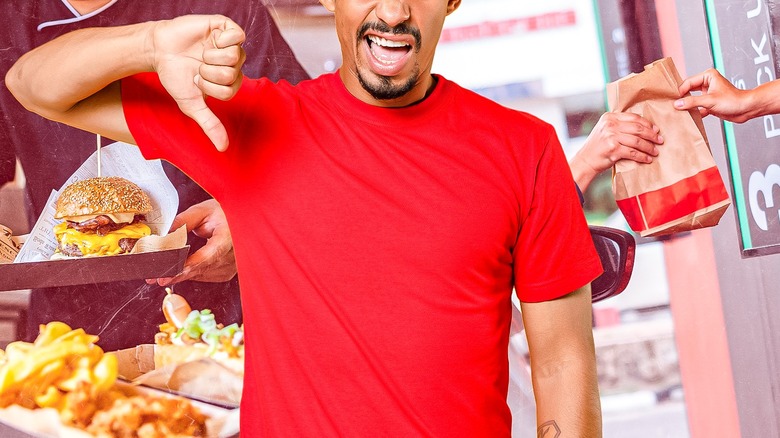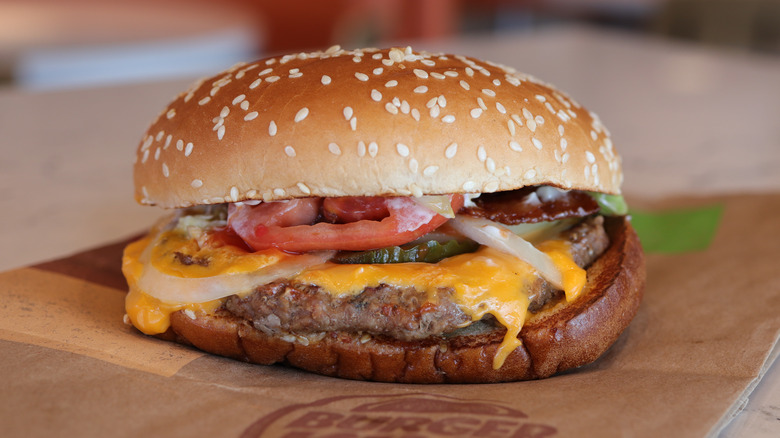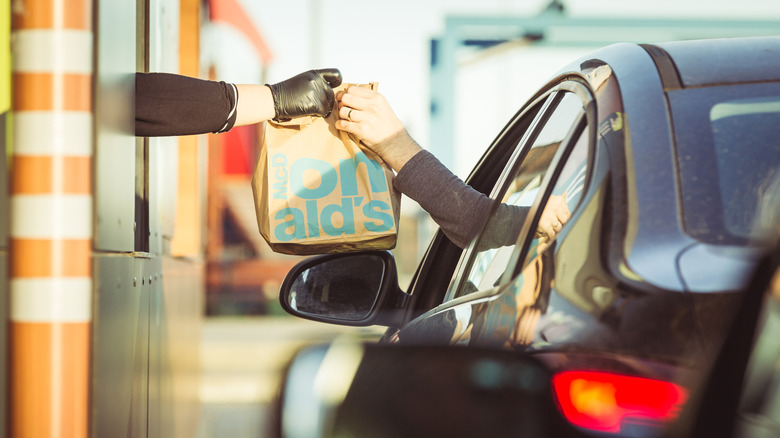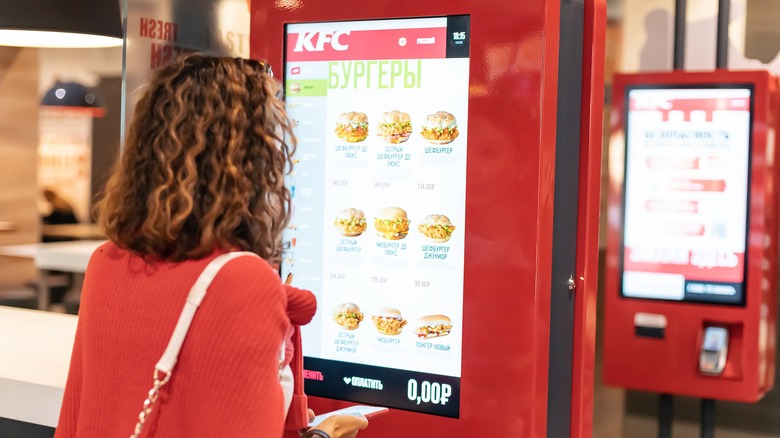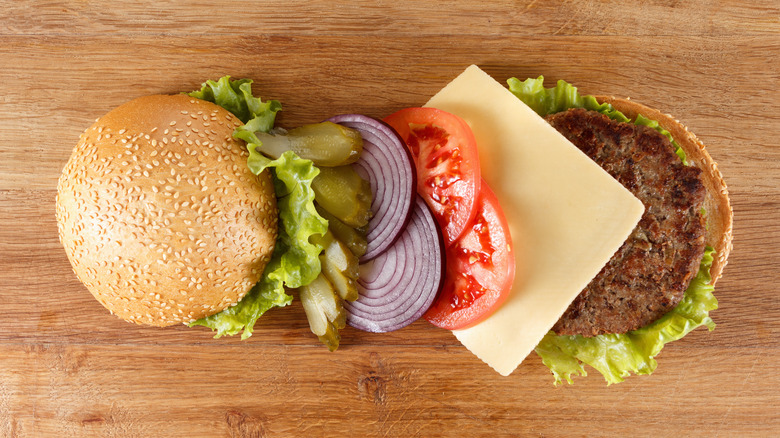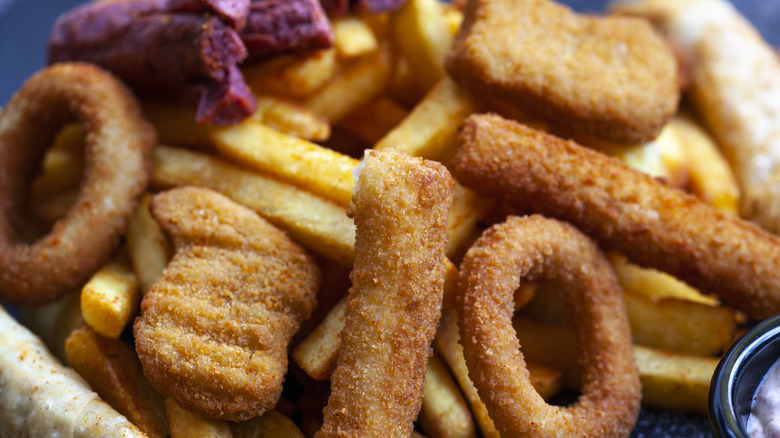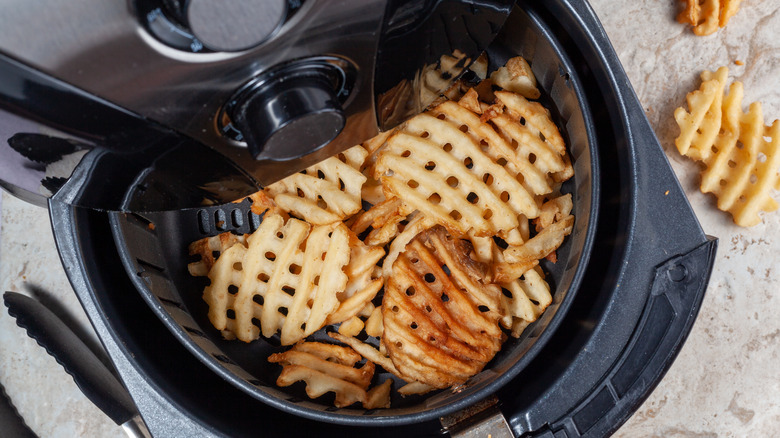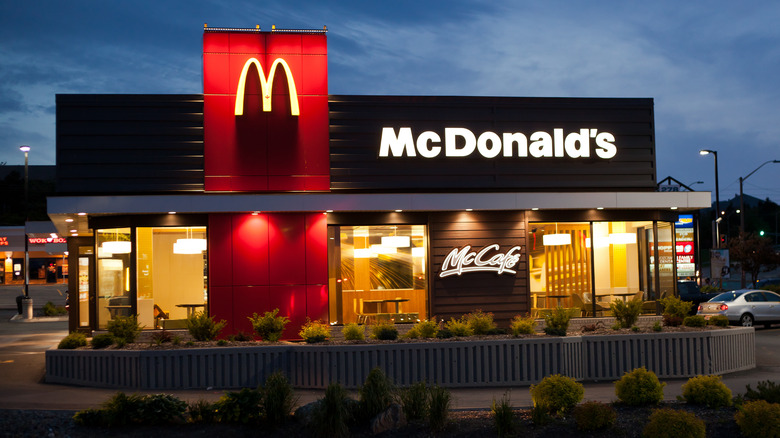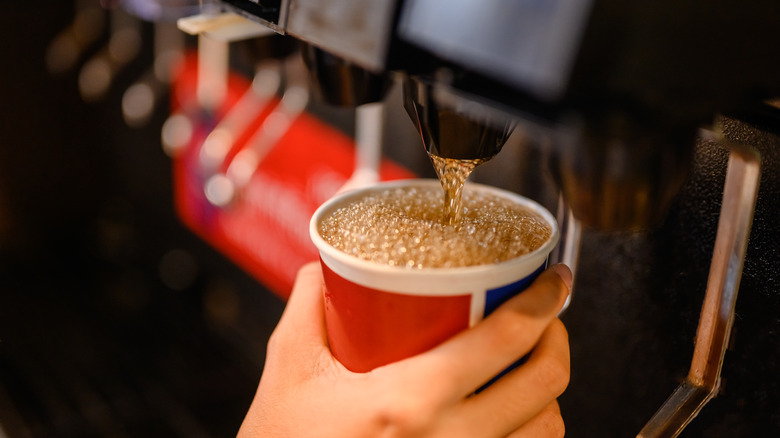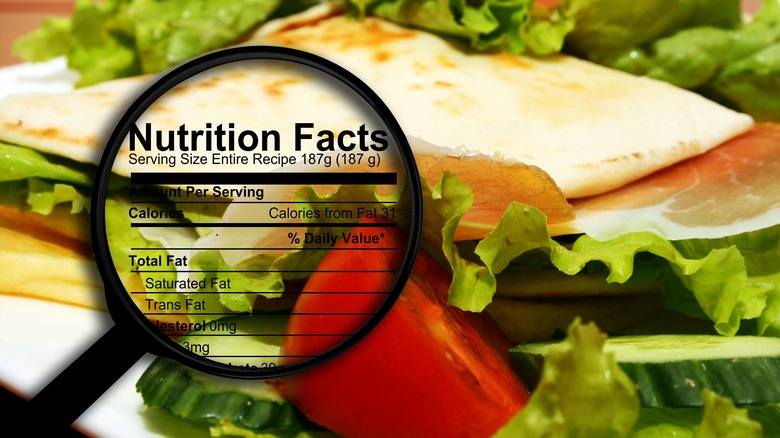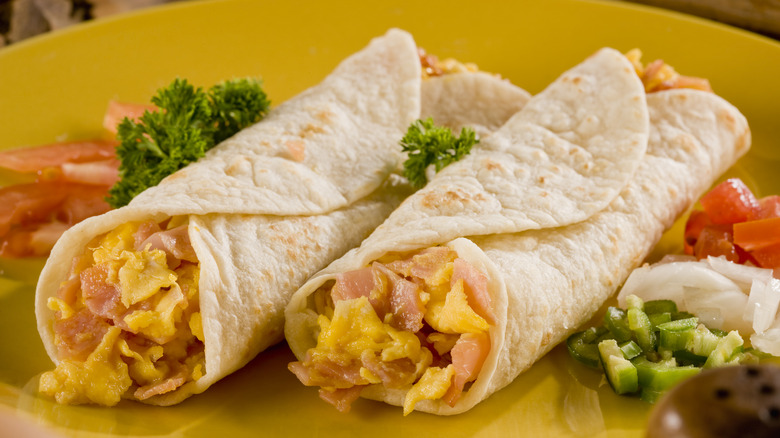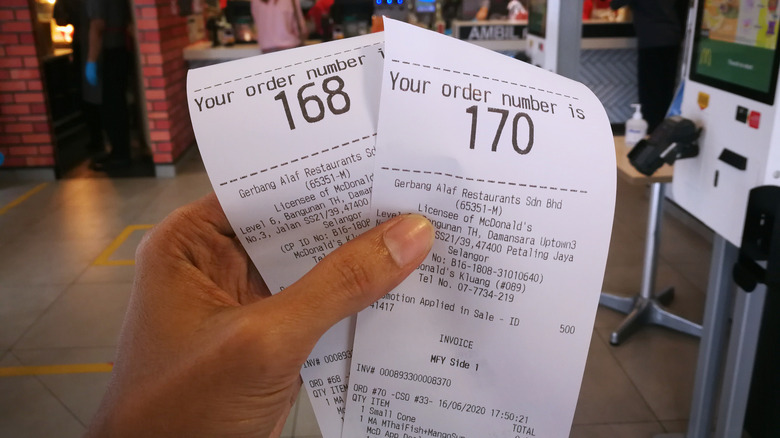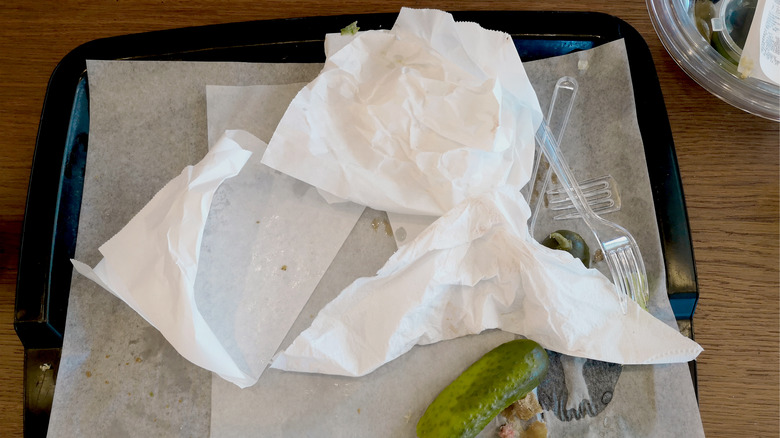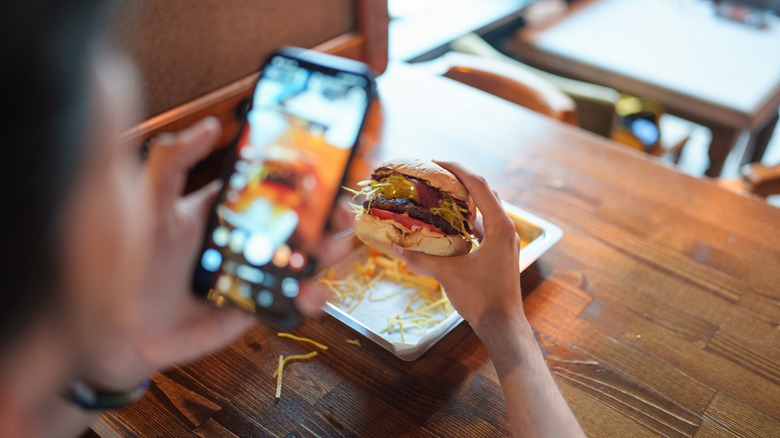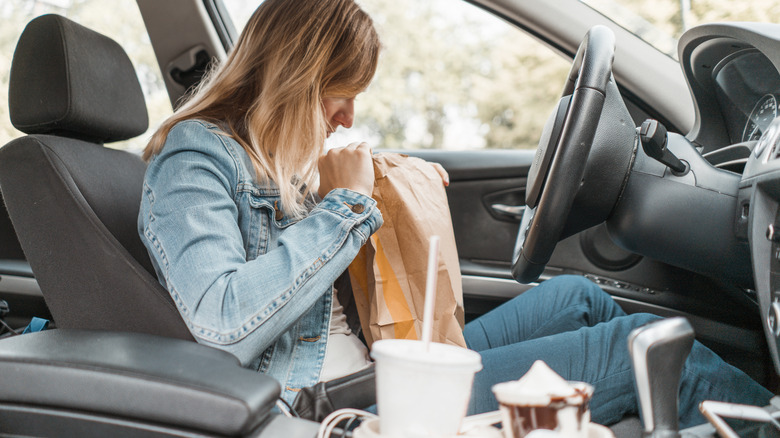16 Mistakes You're Making At Fast Food Restaurants
There are few things more frustrating than dealing with a bad food experience when all you wanted to do was get something to eat as quickly as possible. While certain locations will always be hit and miss, there may be a few mistakes you're making at fast food restaurants that are leading to repeated unpleasant visits. As someone who worked in fast food locations ranging from Sonic Drive-In to combination KFC/Taco Bell storefronts, I've often regretted some of my own past actions when ordering at these places (and others) since.
Thankfully, most of these problems can be easily avoided with a bit of forethought, patience, and empathy. Fast food workers are often young and underpaid, and the quality of their management and training can vary from incredibly dedicated to barely present depending on how involved the owner of the franchise is. Keeping this in mind when ordering will help you avoid the mistakes you're making at fast food restaurants and ensure your meal experience is better than it would be otherwise.
Using the bags to put sauce on
French fries and ketchup is a classic combination, but not everyone wants to get ketchup all over their hands, and most fast food restaurants don't have the big dipping cups like Chick-fil-A does. You might think that the paper bag your food came in, or even the cardboard box which housed your burger, is a perfect plate substitute, but this is far from the best solution and could be actively harmful.
In 2022, a study from Consumer Reports revealed many different forms of fast food packaging, and especially paper packaging, had dangerous levels of PFAS (per- and polyfluoroalkyl substances, also called "forever chemicals"), the exposure of which has been connected to, among other things, an increased cancer risk. Even though some fast food brands promised to change packaging practices, putting your sauce on the same paper that has been touched by multiple people, some of which have been handling food, is never a smart idea.
Being too talkative at the drive-thru
Because fast food restaurants like Sonic are set up so that the customers are never actually inside the building, you may not know that your drive-thru order is being broadcast loudly to everyone in the kitchen as well as the drive-thru attendant. This is beneficial to the employees because it means they can begin work on your meal immediately, but it also means any extraneous conversations you are having in your car will be heard by everyone in the building.
There are few things more frustrating for drive-thru workers than when a customer starts a conversation with someone else while in the middle of an order. To ensure the smoothest experience, make sure to minimize all noises in the car, including the radio, and ask everyone else in the car what they want to eat first. If you need extra time before starting, that's okay — the attendant can mute the speaker until you are ready. But once you begin, focus only on giving the order, not sharing your personal details with the whole staff.
Not checking the value menu properly
While lots of people still prefer the convenience of saying, "Give me a number two with large fries and a drink," rising fast food prices have driven many customers towards more wallet-appealing value menus. At first glance, just going straight to the dollar menu might seem like the perfect solution, but some value prices are more deceptive than they may appear.
If blindly following the value menu is one of the mistakes you're making at fast food restaurants, then be sure to look closely at the amount of food you're getting compared to the money exchanged each time. Value menu prices and food amounts are always changing (like when Dominos subtly reduced the amount of chicken wings in its three-topping combo deal), and what was a $0.99 burger yesterday may suddenly turn out to be $1.29 at a moment's notice.
Not asking for ingredients on the side
Unless you are planning on eating your fast food burger in the next three minutes, it is probably going to get rather soggy and gross in transport. A bunch of condiments and vegetables squished against warm meat and bread wrapped in paper won't keep terribly well, which is why it's best to get condiments on the side when ordering a burger to-go.
Not only will ordering your toppings on the side keep your bread from getting all messy, it will ensure all the ingredients remain crisp for when you do eventually get where you're going. If you've been wondering how to make sure your delivery arrives in as edible a form as possible, asking for the sauce, vegetables, and any other toppings on the side is the right call.
Getting excited about that extra onion ring in your fries
Nearly everyone has had the experience of ordering a meal at a fast food restaurant where multiple types of sides are served and receiving a surprise onion ring, tater tot, or mozzarella stick inside their order of something else. This may seem like a fun little gift from the kitchen crew, but in reality, this usually means something went wrong in the holding process.
Whether it's because the cook was using the same fryer for multiple items at once or someone wasn't paying attention to leftover stragglers hanging about in the warming baskets, having something like an onion ring cooked alongside your fries is cross contamination. You may be excited for the unexpected bite, but people with gluten intolerance issues or allergies definitely won't be.
Not using the loyalty apps
Food loyalty programs have been around in the U.S. since the 1800s, and these days, if you are the type of person who frequently visits the same few restaurants, it just makes sense to sign up for some of the many fast food loyalty apps, considering all the great deals on offer. Some of these programs (like Chick-fil-A's) are definitely better than others (looking at you, Jimmy Johns), but all of them will give you at least some amount of savings.
One thing to remember when using some of the most downloaded food apps, especially if you have access to lots of them, is to always check your profile settings to make sure you only opt-in to the features you are comfortable with. This will help prevent unwanted emails from clogging up your inbox and ensure your data isn't being shared with anyone you haven't approved.
Reheating your fast food improperly
This one is less of a mistake you're making at fast food restaurants and more a mistake most people make after they've gotten home. Remembering to order toppings and condiments on the side, or at least deconstructing them beforehand, is one step you really shouldn't skip when reheating a fast food burger, but no amount of separation will help if you just shove an ice-cold meal into the microwave.
How to properly reheat your fast food meal depends on what exactly the meal is, but whole hamburgers, leftover pizza, and fried food should never be microwaved, as it can really affect the texture or even taste. Instead, consider warming up things like chicken fingers and pizza in the oven. Hamburger patties should be brought back up to temperature on a pan or stovetop, and the trick to reheating French fries so they stay crispy is to use an air fryer or, lacking that, an oven.
Showing up right before close
Showing up right when the employees are expecting to lock the doors is something you should avoid doing at any restaurant, but arriving at a fast food place right before close means you likely will be getting whatever soggy leftovers they can find. It's typical for employees to begin the cleaning and closing process at least 30 minutes before the actual moment the store closes, and often, workers will leave any remaining food they think they might need under warmers while shutting down the grill and fryers.
Not only is it rude to pull up right before a business is about to close its doors and make a large order at a drive-thru, but you probably won't be getting anything fresh either. If you don't mind being the reason a store full of people will be going home an hour later, then prepare to wait — even if they do turn a fryer back on for you, oil doesn't heat up instantly.
Forgetting to ask for no ice
Soda fountain machines work by combining flavored syrup, which is usually delivered to the restaurant by the manufacturer, with carbon dioxide and chilled water. This syrup is relatively cheap for the amount of drinks it can produce, but that hasn't stopped most businesses from trying to squeeze every last milliliter of profit from them. If you're wondering why every fast food beverage is filled from base to lid with ice, that is exactly why.
While some fast food restaurants like Wendy's appeared to be adjusting its policy on how much drink to give people who order no ice, asking for it to not be included will still give you more beverage for your money at most locations. Depending on the price difference between sizes like small, medium, and large, without ice, you might even be able to go down a cup size and still end up with more soda in the long run.
Changing your mind after ordering
Drive-thru times are important, and changing your order at the window is one of the most frustrating mistakes you can make at fast food restaurants — not just for you, but for everyone else, too. It's already difficult enough to make sure each order is delivered to the appropriate car, especially in drive-thrus that have multiple lanes that merge together. Adding in an extra order to the middle of the already-existing line of tickets has the potential to cause confusion in the kitchen.
Not only that, but by the time you have pulled around to the spot where you are supposed to pay, your order may already be halfway done. This isn't as big a deal if you're just adding another item, but if you are making a substitution, it will likely cause food waste. If you've decided you want a burger instead of chicken fingers, for example, now there are multiple strips of meat in the fryer that either need to be immediately repurposed or thrown away.
Not paying attention to the nutritional information
Every fast food restaurant has its own version of "healthy" options available for people who are looking for something more substantial than burgers and fries. Some, like Jack in the Box's grilled chicken salad, are actually quite good for you. Others aren't, like Chick-fil-A's cobb salad, which can contain over three times as many calories as the one from Jack in the Box, depending on the type of added-on protein you choose.
It's not just salads at fast food restaurants that can be deceptively unhealthy. Having a muffin and a coffee first thing in the morning doesn't sound like it should net you nearly 1,000 calories, but if you order a medium caramel frappé and a blueberry muffin from McDonald's, that's what you'll be eating. Since 2018, providing caloric and nutritional information to customers at chain restaurants with 20 or more locations has been required by law, per the FDA. So if you've never checked the numbers on your regular order, it may be wise to do so.
Ordering the all-day menu too late
All-day breakfast at a fast food restaurant may sound like a good thing, but only if the kitchen is diligent in making sure each item remains fresh and is rotated out properly. If you get lucky and visit a store with a strict manager and dedicated employees, you may be able to find a good breakfast burrito at 6:00 p.m. But it's far more likely you will end up with a chewy tortilla that's been sitting in a steamer tray for hours.
One of the many reasons most McDonald's no longer offer all-day breakfast is because of how much trouble it is keeping extra menu items on hand without generating too much food waste. Unfortunately, often when employees are faced with this issue, they will simply make one large batch of something and keep it at a holding temperature for as long as legally possible. It's a lot easier and quicker for someone to fill a warming tray with wraps than it is to make one from scratch between other orders, so unless breakfast is a major part of the restaurant's menu to start with, it should probably be skipped from the afternoon on.
Not checking the receipt
Out of all the mistakes you're making at fast food restaurants, not remembering to check the receipt may be the most paramount. In addition to the importance of making sure you've paid the correct price (and for your own meal, not someone else's), the receipt usually contains all the modifications made to your order. Ensuring this is right now means you won't have to flag down an employee and tell them there's been a mistake or, worse, go back through the drive-thru again if you are in a vehicle.
In addition to looking at the receipt, always check the contents of your bag before leaving fast food restaurants. Don't do this at the window — nearly every drive-thru has a space where you can pull ahead without getting too far from the door, and you don't want to hold up the line for other cars. But just blindly trusting everything will be correct is a good way to bring home something different than what you ordered.
Leaving your tray on the table
Just because you paid for your food doesn't mean you shouldn't clean up after yourself. Unless otherwise stated by the restaurant, nearly every fast food place expects you to put your own trash away. There are usually multiple trash cans both throughout the restaurant and by the exits, and since you have to move in that direction to leave anyway, there is no reason you can't carry your tray with you.
This isn't only common courtesy; it's also for sanitary reasons. Yes, most fast food places do send someone out to make sure the lobby is clean every so often, but that person needs to be focused on refilling the drink stations and all of their other tasks over cleaning tables. Even worse, if the employee is in a hurry, they may not have time to clean up properly before returning to handle food. Leaving your trash on the table slows down the business and makes it more dangerous for everyone else.
Expecting your food to look like the picture
Every fast food attendant has likely heard, "That's not how it looked in the picture," from a disgruntled customer at some point. While most people working in kitchens want to deliver the best-looking meals possible, the truth is that the images shown in fast food commercials and on the restaurant's menu screens are extensively manipulated to appear as delicious as possible.
In an interview with CNBC, food styling author and owner of Bybee Photography Jean Ann Bybee explains: "Nothing is just plopped down and put in the center like it is when you order at a restaurant," further noting that everything from tweezers and toothpicks to blowtorches, paints, and glue are used to enhance the look of the food on camera. No kitchen crew is going to have the time or the equipment to make your food look like it does in an advertisement, and if they did, it probably wouldn't taste very good.
Not washing your hands first
While knowing when and how to wash your hands properly seems like common sense in a post-COVID-19 world, it's easy to get distracted and not think about washing your hands when going through a drive-thru because of the convenience factor. If this is a mistake you're making at fast food restaurants, it is definitely time to stop, or at least time to start carrying some sanitizing wipes in your car.
Eating in your car with the same dirty hands you just used to hand money to a stranger is never a good idea, doubly so when considering how food safety precautions declined after the pandemic. Even if you are planning to go inside and eat your meal at a table inside the restaurant itself, never forget to wash your hands first.
